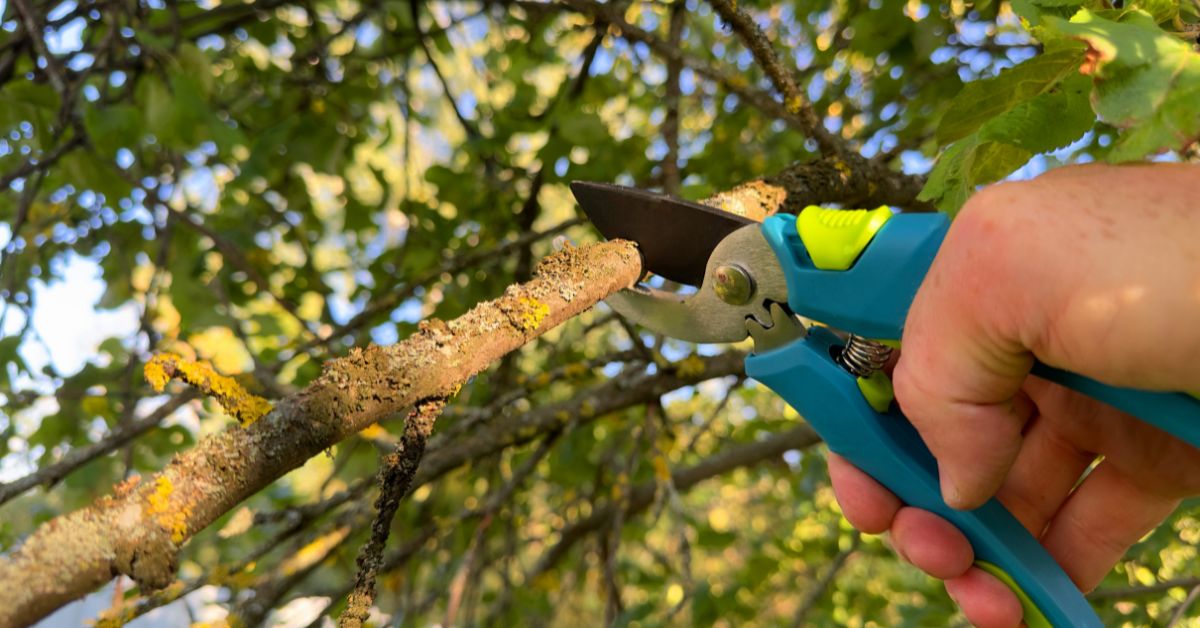
What to Consider When Planting New Trees
Regular pruning is crucial to a tree’s health, structure and appearance. It helps trees grow stronger, reduces disease risk, and removes hazards from weak or damaged branches. If you’ve wondered “when should a tree be pruned”, this guide explains the signs to watch for and when to prune a tree for the best results.
Signs a Tree Needs Pruning
Homeowners often ask “when should a tree be pruned?” Start with the symptoms—these clear signs indicate when to prune a tree:
- Dead or Dying Branches: Dead branches are one of the most obvious signs that a tree requires pruning. These branches can become brittle and pose a risk of breaking off, which may lead to property damage or injury. Removing dead wood helps keep the tree healthy and safe.
- Overgrown or Crowded Branches: When branches start to crowd each other, they can rub together, causing wounds that make the tree more susceptible to disease and pests. Pruning can help open up the canopy, allowing sunlight and air to penetrate the inner branches, promoting healthier growth.
- Crossing or Tangling Branches: Branches that cross or tangle with each other can lead to structural issues and create areas where pests and diseases can take hold. Removing these branches helps to maintain a strong structure, ensuring the tree can withstand weather conditions and grow symmetrically.
- Signs of Disease or Pest Infestation: If you notice signs of disease (like fungal growth, cankers, or discoloured leaves) or evidence of pests (such as sawdust or holes in the bark), pruning affected areas can help prevent the disease or infestation from spreading. Consulting an arborist is recommended if the disease appears widespread.
- Low-Hanging or Hazardous Branches: Branches that are too close to the ground or pose a hazard to nearby buildings, fences, or walkways should be pruned for safety. Pruning these branches not only protects property but also improves the tree’s structure and appearance.
These signs are clear indicators that a tree is ready for pruning, helping homeowners maintain a safe and healthy yard.
How Seasonal Factors Influence Pruning Needs
When should a tree be pruned through the year? Timing depends on species and season. Use the guide below to choose the best time to prune trees based on natural growth cycles:
- Deciduous Trees: These trees benefit most from pruning during the late winter or early spring, while they are still dormant. Pruning at this time reduces stress on the tree and encourages new growth in spring.
- Evergreen Trees: Pruning evergreen trees is best done in late winter or early spring, just before new growth begins. Light pruning during the growing season is also possible, but avoid heavy pruning in autumn.
- Flowering Trees: Timing for flowering trees depends on when they bloom. Early-spring flowering trees, such as magnolias, should be pruned immediately after blooming. Trees that flower in late spring or summer can be pruned in late winter.
- Fruit Trees: Fruit trees are typically pruned in late winter to prepare them for a productive growing season. This timing supports a better fruit yield and keeps the tree healthy.
Understanding the best time to prune based on the tree’s natural cycle ensures that pruning provides maximum benefit and minimal stress to the tree.
Benefits of Timely Pruning
Pruning trees at the right time offers numerous benefits for tree health, growth, and overall appearance:
- Encourages Healthy Growth: By removing dead or crowded branches, pruning allows the tree to focus its energy on healthy growth. This results in a more robust tree with a fuller, balanced canopy.
- Prevents Disease and Pest Infestations: Timely pruning removes branches that may be infected or damaged, reducing the likelihood of disease spreading throughout the tree. A well-pruned tree is less susceptible to pests and is better equipped to fight off infections.
- Improves Structural Integrity: Pruning helps shape young trees and reinforces mature trees by removing weak or poorly positioned branches. This structural improvement makes the tree more resilient to wind, heavy rain, and other weather conditions.
- Enhances Aesthetics and Property Value: A well-pruned tree enhances the look of a property, adding to its curb appeal. Trees with healthy, open canopies and strong structures are attractive landscape elements that can increase property value.
- Increases Safety: Removing dead, damaged, or hazardous branches keeps the tree safe for the surrounding area, reducing the risk of falling limbs that could harm people, pets, or property.
Regular, timely pruning is essential for maintaining trees that are not only healthy but also aesthetically pleasing and safe.
Pruning is an essential part of tree maintenance, ensuring that trees remain healthy, safe, and visually appealing. By understanding the signs that indicate when a tree needs pruning—such as dead branches, overgrowth, or signs of disease—homeowners can address issues promptly and keep their landscape well-maintained. Seasonal factors play a role in the ideal timing for pruning, depending on tree type, while timely pruning provides benefits that extend to the tree’s health, structural integrity, and the safety of your property. A well-maintained tree is an investment in your home’s value and beauty, making pruning an indispensable part of responsible tree care.
Call Us Today
(07) 3353 4433 or 0411 599 995.
Or email trees@affordabletreeservice.com.au
